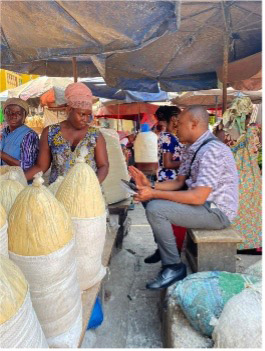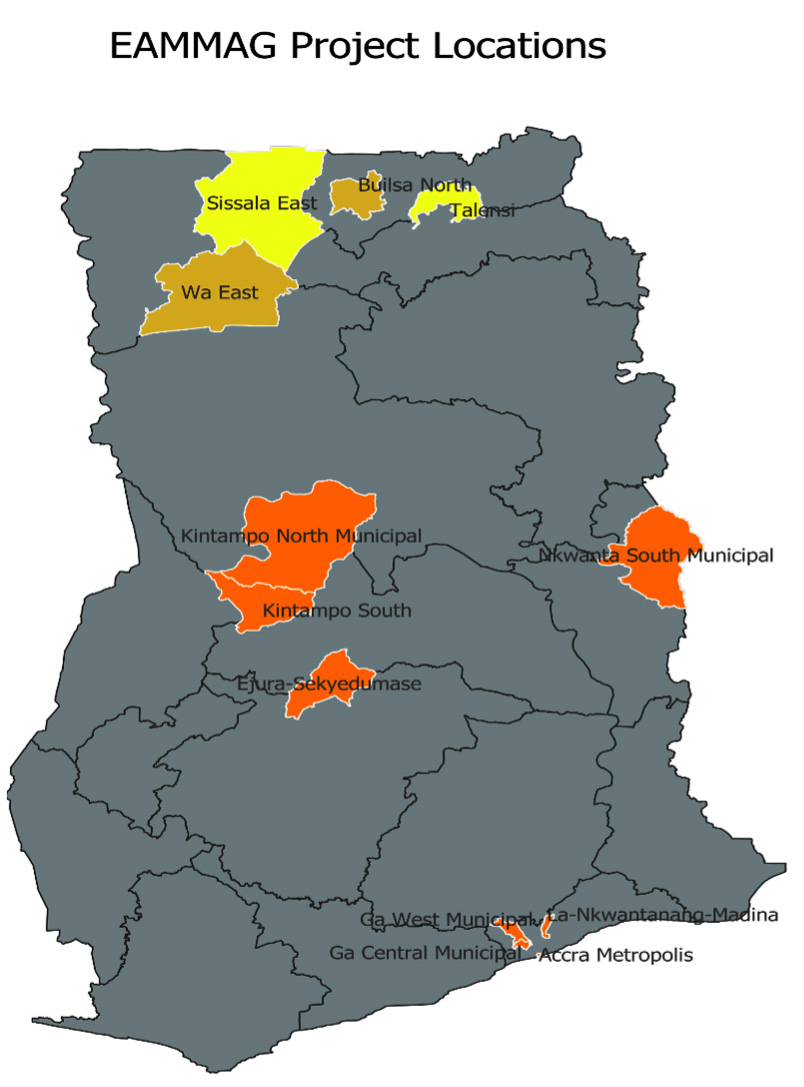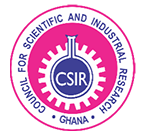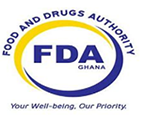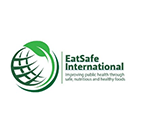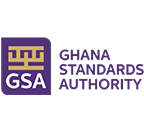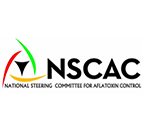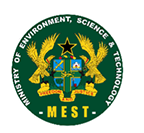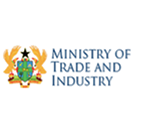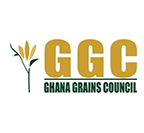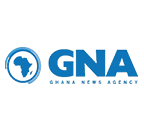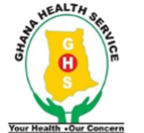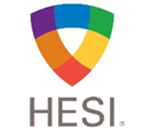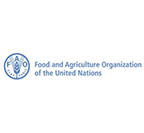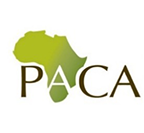EAMMAG
Project Detail
In Ghana, approximately 319,000 tonnes (18%) of maize are lost annually due to aflatoxin contamination (Omari et al., 2020). In 2004, the EU Rapid Alert System for Food and Feed (RASFF) ranked Ghana among the top ten countries with the highest alert notifications of elevated aflatoxin levels. Despite various interventions over the years, the issue persists. In 2019, 35% of groundnut paste intended for export exceeded the Ghanaian and EU aflatoxin limit of 10ppb and 4 ppb respectively (Ghana Standards Authority, 2019).
While comprehensive national data on aflatoxin levels remain limited, recent unpublished research by Dankyi et al. (2023) across 10 regions of Ghana indicates that over 80% of maize samples and 73% of groundnut samples contained aflatoxins in varying concentrations. Additionally, 51% of maize samples and 26% of groundnut samples exceeded Ghana’s maximum permissible limits—15 ppb for maize and 10 ppb for groundnuts. Globally, the aflatoxin challenge continues to worsen. In 2018, aflatoxins accounted for 60% of the top 10 hazard notifications reported by the EU-RASFF.
Though the EU’s imports of Ghana’s maize and groundnut products have decreased over the years partly due to aflatoxins, other market opportunities have emerged. Data from Ghana the Export Promotion Authority (2020) reports that between 2014 and 2019, significant quantities of peanut butter were exported to the USA and other key markets, including Canada, Japan, Australia, South Africa, and ECOWAS countries such as Nigeria, Togo, and Côte d’Ivoire. Domestically, food industries and organizations like the World Food Programme (WFP), which purchase maize and groundnuts in bulk, often struggle to access aflatoxin-safe products. Additionally, maize and groundnuts are staple foods in Ghana, driving high local demand.
Given these domestic and international market opportunities, it is crucial for Ghana’s food value chain actors to enhance compliance with aflatoxin regulatory limits to maintain competitiveness. Regulatory compliance is especially vital with the implementation of the African Continental Free Trade Agreement (AfCFTA), the US Food Safety Modernization Act (FSMA), the European Union’s increased official controls on certain groundnut products from Ghana, and ongoing efforts by the Codex Committee on Contaminants in Foods (CCCF) to establish maximum limits for total aflatoxins in ready-to-eat peanuts and specific cereals and cereal-based products.
To address the problem of aflatoxins, Ghana adopted a National Policy for Aflatoxin Control in Food and Feed in 2022. Some key issues the policy highlights are:
- Low awareness about aflatoxins among value chain actors.
- Inadequate capacities of institutions and value chain actors to manage aflatoxin contamination.
- Limited use of existing methods for aflatoxin management due to issues such as limited access and lack of information about their cost-effectiveness and risk reduction potentials.
- Collaborators: Ghana, HESI
- Funder:STDF. The Standards and Trade Development Facility (STDF) is a global partnership established by FAO, WOAH, WHO, the World Bank and WTO.
Goal and Objectives of the EAMMAG Project
Key Objectives
- Increase knowledge and skills of value chain actors for compliance with aflatoxin specifications in maize and groundnut products.
- Increase access of value chain actors to resources to facilitate compliance with aflatoxin control practices.
- Increase access and utilisation of aflatoxin testing facilities in the project districts.
- Enhance traceability practices and access to information and markets by value chain actors through a digitised platform.
- Strengthen gender equality and social inclusion through gender analysis to assess the gender dimensions of the project and to identify challenges, needs and priorities that might affect men and women differently.
- Support the work of the Codex Committee on Contaminants in Foods (CCCF) by supplying them with data collected on aflatoxin contamination in maize and groundnuts during the baseline and monitoring phases of the project.
Expected Results and Key Deliverables
- Baseline report (i.e. identification and ranking of the various methods for aflatoxin control based on their efficacy and cost-effectiveness, training and resource needs and level of aflatoxins in products).
- Targeted and customised training modules developed and validated based on 1. Baseline report. 2. Ghana’s code of practice and technical regulation for aflatoxin control in maize. 3. Existing training manuals.
- Training delivered to regulators, extension officers and value chain actors using the validated training modules while integrating the communication for behavioural impact (COMBI) approach
- Resources for aflatoxin management (e.g. hermitic bags, moisture meters, dryers, bio-control materials) supplied to value chain actors and training them on their appropriate usage.
- Aflatoxin testing instruments and resources supplied to regulatory institutions and selected value chain actors and their capacity built on their use and maintenance including sampling procedures.
- Database on aflatoxin contamination data established for decision-making.
- Safer disposal methods and alternative uses of contaminated products identified.
- Innovation and digital platforms established linking value chain actors and other stakeholders.
- Digitised traceability systems for tracking aflatoxin contamination developed. 1. By using QR codes and other digital tools, labelling information will be linked for traceability and to the national alerts and emergency response system.
- Gender analysis and guidelines for mainstreaming gender in all the project activities to strengthen gender equality and inclusivity in aflatoxin control for market access.
- Communication, advocacy and public awareness increased through documentaries, short videos, educational materials, exhibitions of best practices, participation in national and community radio and TV programmes, and project dissemination - workshops, policy dialogues, webinars, international conferences, journal and newspaper articles, policy briefs, social media posts, etc.
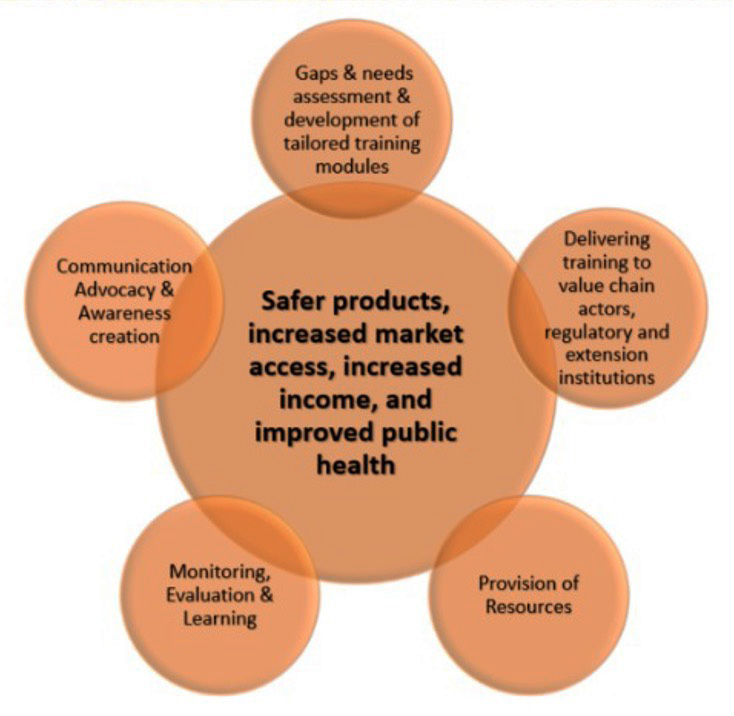
Where will the Project be implemented?
| Region | Districts & Value chain focus | |
|---|---|---|
| Maize | Groundnuts | |
| Upper West | Sissala East | Wa East |
| Upper East | Talensi | Builsa North |
| Ashanti | Ejura Sekyedumase | Ejura Sekyedumase |
| Bono East | Kintampo North | Kintampo North |
| Oti Region | Nkwanta South | Nkwanta South |
| Greater Accra | Accra - Major Markets and Processing sites |
Who will benefit from the project?
-
The project beneficiaries are maize and groundnut value chain actors.
o Smallholder and medium-scale farmers,
o Processors (small, medium and large),o Traders (aggregators, wholesalers, retailers, exporters),
o Consumers – institutions e.g. schools, restaurants and hotels and individuals)
-
Public and private institutions providing extension, regulatory and monitoring services.
o Extension officers in the agriculture and health sectors in the project regions.
The extension officers will be trained through a trainer of trainers’ module and be supported technically to also deliver the training to the value chain actors.
o Regulators from the FDA, GSA, and Municipal Assemblies will be given access to simple aflatoxin testing facilities to enable them to monitor aflatoxin levels in the products of the value chain actors.
-
Capacity building for Early Career Researchers (PhD and Masters Research).

